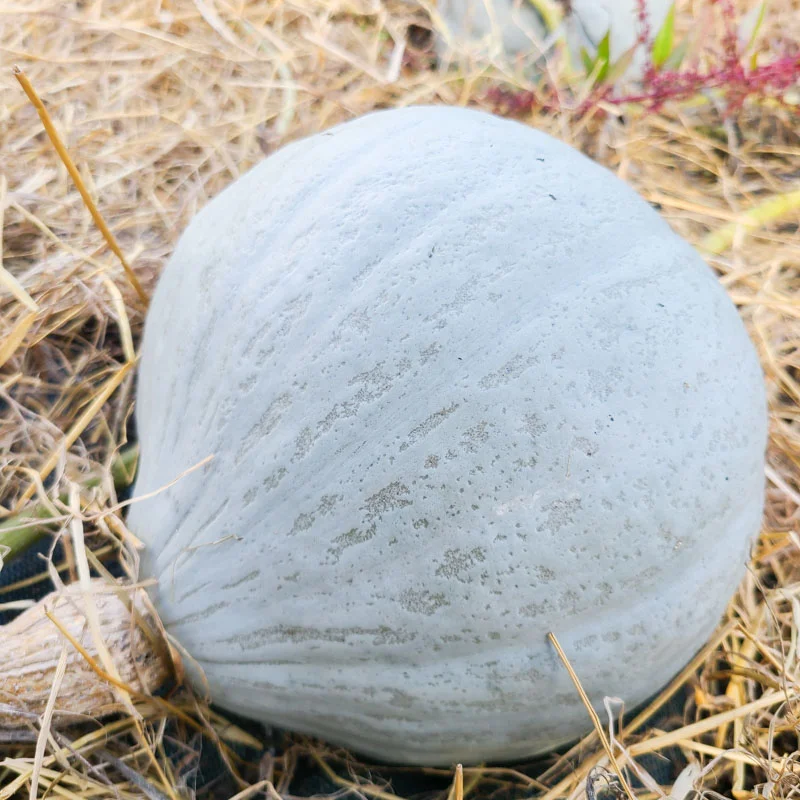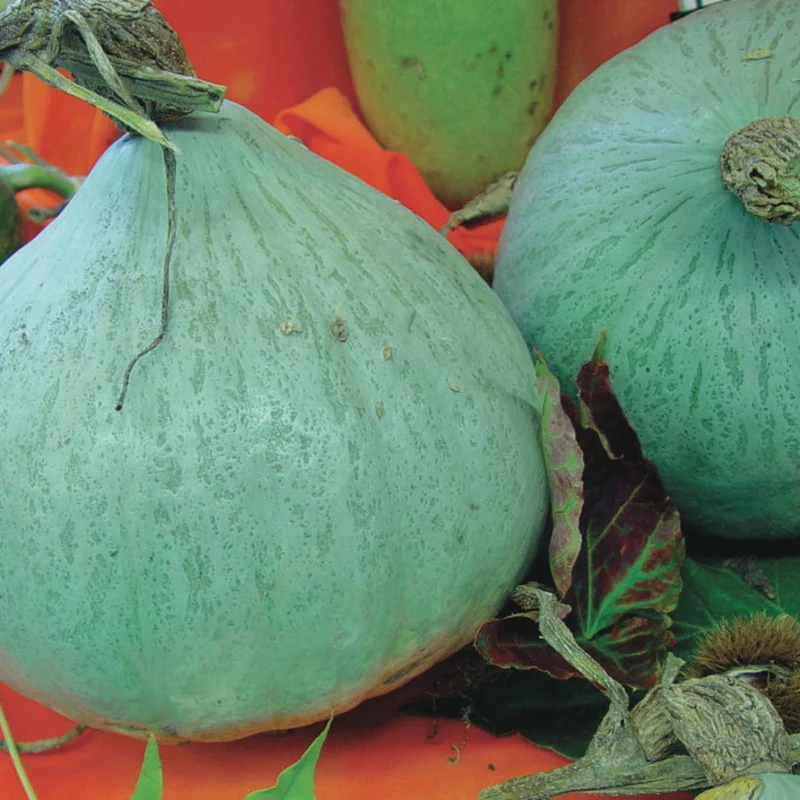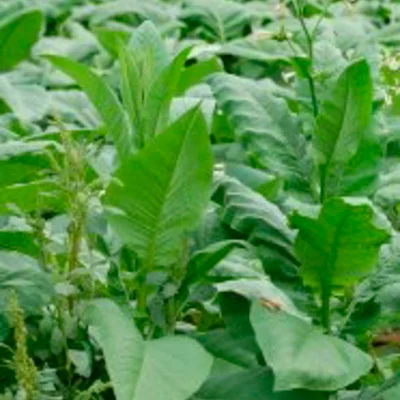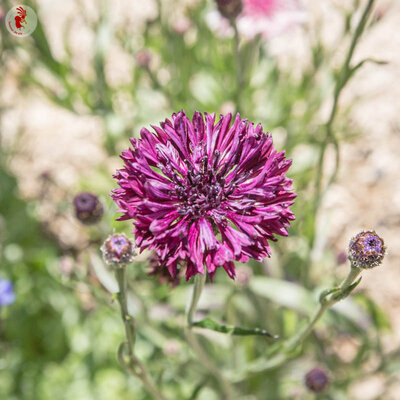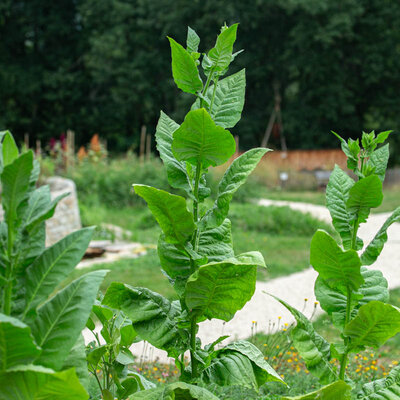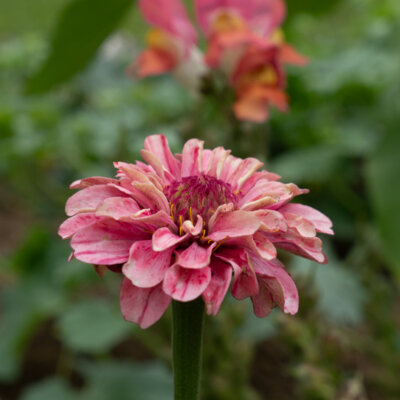Blue Ballet - Maxima squash
Blue Ballet squash is a runner variety with blue-gray "Hubbard blue" spinning top-shaped fruits up to 20 cm in diameter and weighing up to 2.5 kg. The smooth skin encloses bright orange, sweet flesh.
Description of the Blue Ballet squash
Blue Ballet squash, Cucurbita maxima, is a variety of fruiting vegetable native to the United States. This runner produces 3 to 4 "blue hubbard" (top-shaped) fruits, 15 to 20 cm in diameter and weighing 1 to 2.5 kg each. Their smooth, thick, gray-blue skin encloses orange flesh with a sweet, chestnut-like flavor. This mid-season variety can be cooked like a pumpkin or buttercup squash, with similar taste and flesh. Ideal for gratins, soups, purées and jams, it can be combined with many vegetables and meats in recipes. What's more, it keeps for several months in a cool, well-ventilated place.
Blue Ballet squash seedlings
Blue Ballet squash maxima is sown in pots of 2 to 3 seeds, 2 to 3 weeks before transplanting, from March to May.
Place seedlings under a light shelter, at a temperature of between 18 and 20°C, and keep the substrate moist until the seeds emerge. Be careful not to sow squash seeds too early in the season, in which case the roots will become fibrous, making growth difficult in the garden. Transplant into the vegetable garden once the last frosts have passed.
From April to June, after the last risk of frost, it is possible to sow directly in the garden in 2 to 3-seed stacks.
Prepare 2 weeks in advance holes filled with compost or organic matter, spaced 2 m apart in all directions, to accommodate the squash plants or seeds. Mulch the soil to maintain sufficient humidity and limit water evaporation.
Next to the squash, we recommend planting corn and beans, giving rise to the "three sisters" or milpa crop. Basil plants can also be planted between pumpkins to repel pests.
Harvesting and storing Blue Ballet squash
Although Blue Ballet squash fruit can be harvested and eaten immaturely, those intended for winter storage should be picked as late as possible, before the first frosts, from July to November, when the stalk begins to dry out and the skin becomes thick. Be careful not to tear them off, but to cut as close as possible to the stem, 10 cm above the stalk.
This variety can be stored for several months in a ventilated, dry place, at a temperature of between 10 and 12°C. Place the fruit, spaced apart and tail up, in crates set high up. They can also be frozen for up to a year, after slicing and cooking.
In the kitchen, this squash seduces with its subtle hazelnut taste and orange color. Its mild, sweet flavor is perfect for soups, gratins, custards and roast meats and vegetables.
These products may also be of interest to you
in bucket, in the ground
Sow in pots at 18-20°C, 2 to 3 weeks before planting. Transplant with the root ball into the ground, after the last frosts, at a minimum distance of 2 m in all directions. To sow directly in the ground, sow after the last frosts, once the soil has warmed up. In both cases, prepare holes filled with compost or organic matter two weeks in advance to accommodate your seedlings or seeds.
March, April, May
April, May, June
July, August, September, October, November
in the ground
sunny
fort
humus
rich, heavy, furniture
Cucurbita maxima
mid-season
From 1000 to 2000 g
12 seeds
thick
Blue, Grey
edible
From 150 to 400 cm
From 15 to 20 cm
runner
United States



